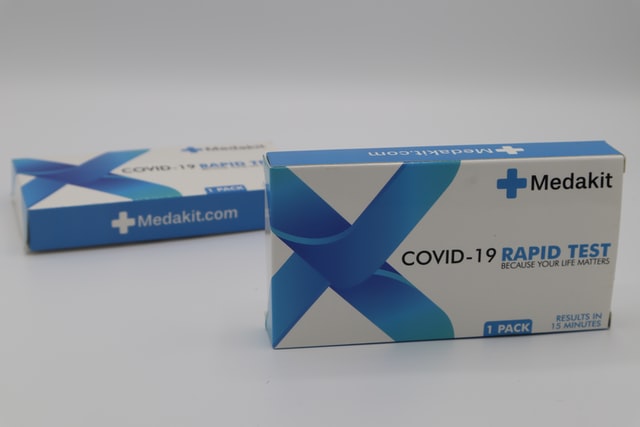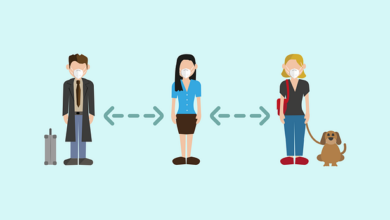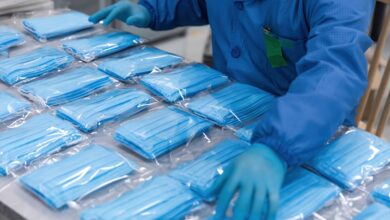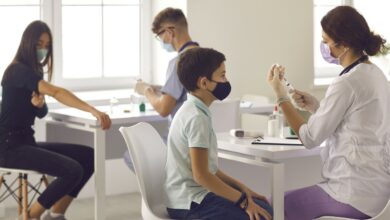A
A
A
As the Coronavirus pandemic spreads across the US, people are lining up to get tested for the virus. The most recent information from the CDC shows that over 52 million people have been tested for active COVID-19 infections. There are testing locations in every city. Some testing sites have lines of cars that stretch for miles with people waiting to get swabbed. Other sites require appointments that are being scheduled days ahead of time. There are many frustrated people that want a test to protect their family and friends, but they are unable to do so because it is too difficult to get to a testing site.
What are At-Home COVID-19 Tests?
The standard method of testing for Coronavirus infections at drive through sites or tests from your doctor’s office involve a trained professional inserting a six-inch nasal swab into the nostril and spinning the swab around for about 15 seconds. The testing site packages the sample, and results are given over the phone somewhere between 2-7 days, depending on the testing site.
Read More »
Some companies are now offering at-home tests to patients. The company sends a box with packaging material and a swab with a set of instructions. The patient inserts the swab into the lower nasal area only. It does not require as deep of an insertion as the standard tests. The sample is mailed back to the lab in the provided box. Some at-home tests use a saliva sample instead of a nasal swab. Test results typically come back 3-5 days from the time the lab receives the sample.
What are the Benefits and Drawbacks of At-Home Tests?
Benefits: At-home tests can be done without leaving your house. It reduces exposure and allows for safe quarantine. Users do not need to wait in line or make an appointment to get swabbed for the virus.
Drawbacks: Completing the test at home has a risk of containmating the sample. Regular people have not been trained to administer the test to themselves. ALthough there are directions, some people may not follow them carefully.
Are At-Home Tests accurate and approved by the FDA?
The FDA has given emergency use authorization (EUA) to some companies that provide at-home tests. According to the FDA, EUA “may allow unapproved medical products or unapproved uses of approved medical products to be used in an emergency to diagnose, treat, or prevent serious or life-threatening diseases…when there are no adequate, approved, and available alternatives.” The bottom line: these tests are not officially FDA approved, but we can use them because we have no other alternatives. The at-home tests have been shown to have similar accuracy as standard tests.
Back in June, the FDA issued three warnings to companies that were illegally giving tests that did not have EUA clearance. So if you decide to get an at-home test for you or your family, make sure that it has EUA approval from the FDA.
Which Companies are Approved for At-Home Tests?
The following companies have emergency use authorization by the FDA for at-home tests:
Pixel by LabCorp:
Approval date: April 21, 2020
Type: nasal swab
Price: Pixel is the only company currently that does not require upfront payment. They bill your insurance. If you don’t have insurance, the price is paid by public funding.
Time for results: 2-3 days from the time the lab receives the sample. The labs are open and working on the weekend.
Everlywell:
Type: nasal
Price: $109. The amount is paid upfront, but it can be reimbursed with your health insurance. The company states it does not make a profit from the tests.
Time for results: 72 hours from the time the lab receives the sample. The labs are NOT open the weekend.
LetsGetChecked:
Type: nasal
Price: $119. The amount is paid upfront, but it can be reimbursed with your health insurance.
Time for results: 24-72 hours from the time the lab receives the sample. The labs are NOT open the weekend.
Other companies are getting approved by the FDA. This is not a complete list of authorized facilities, but it is a good place to start.
Testing at-home for COVID-19 is a growing trend. There are research studies showing that they are equally as effective as tests from facilities. They protect health care workers and the public by limiting exposure. At-home tests will help workers get back to work sooner, and it reduces the manpower needed to run the testing facilities. As more people go back to work, and as students return to school, having safe and accurate tests will be critically important in limiting the death rate of COVID-19.
As always, if you are having severe complications, seek medical care. Otherwise, stay home and protect your community and family. We all have a part to play in ending this pandemic and finding a new normal






